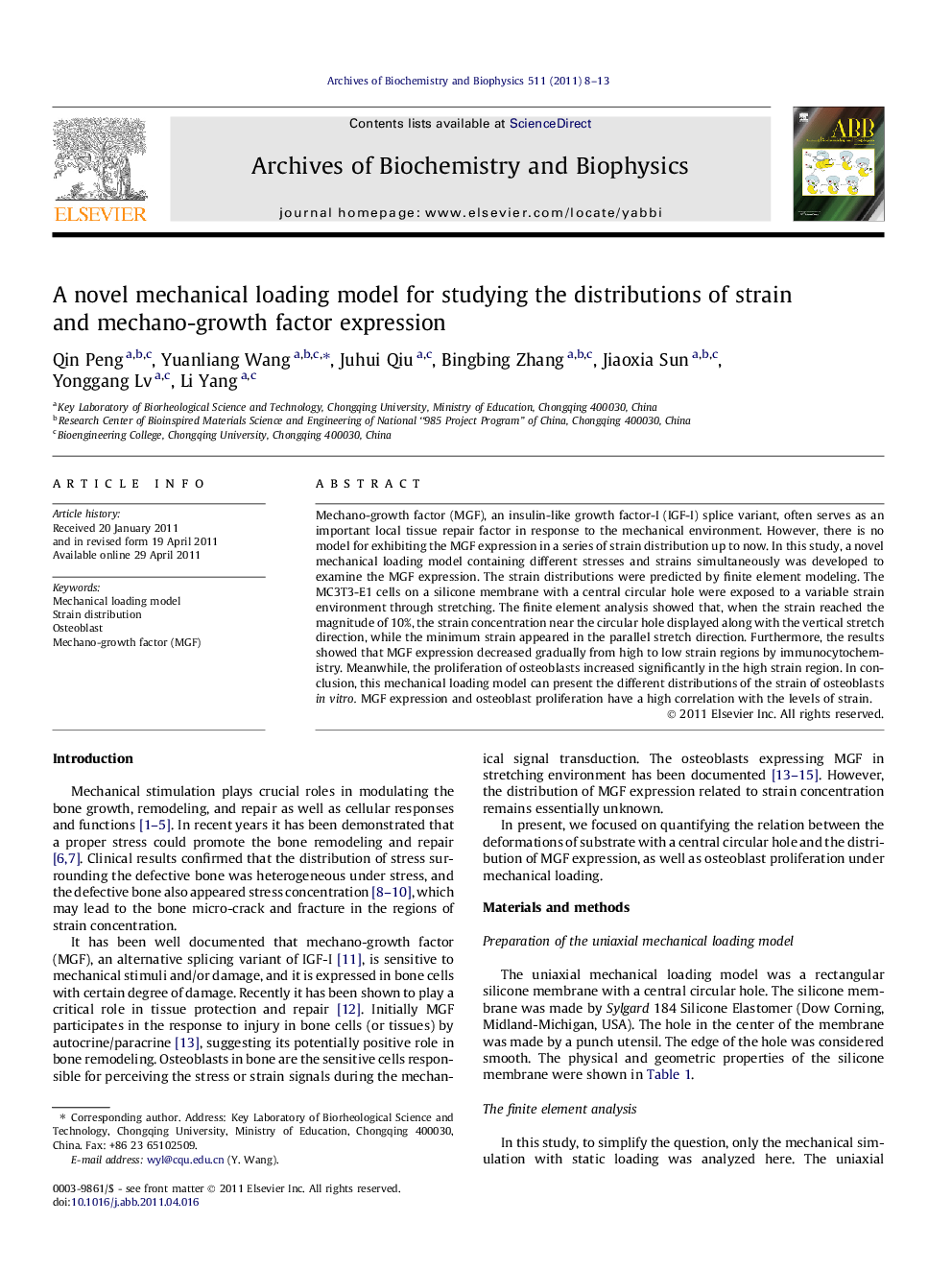| Article ID | Journal | Published Year | Pages | File Type |
|---|---|---|---|---|
| 1925695 | Archives of Biochemistry and Biophysics | 2011 | 6 Pages |
Mechano-growth factor (MGF), an insulin-like growth factor-I (IGF-I) splice variant, often serves as an important local tissue repair factor in response to the mechanical environment. However, there is no model for exhibiting the MGF expression in a series of strain distribution up to now. In this study, a novel mechanical loading model containing different stresses and strains simultaneously was developed to examine the MGF expression. The strain distributions were predicted by finite element modeling. The MC3T3-E1 cells on a silicone membrane with a central circular hole were exposed to a variable strain environment through stretching. The finite element analysis showed that, when the strain reached the magnitude of 10%, the strain concentration near the circular hole displayed along with the vertical stretch direction, while the minimum strain appeared in the parallel stretch direction. Furthermore, the results showed that MGF expression decreased gradually from high to low strain regions by immunocytochemistry. Meanwhile, the proliferation of osteoblasts increased significantly in the high strain region. In conclusion, this mechanical loading model can present the different distributions of the strain of osteoblasts in vitro. MGF expression and osteoblast proliferation have a high correlation with the levels of strain.
► A novel mechanical loading model was developed to examine the MGF expression of the MC3T3-E1 cells in a set of strains distribution. ► The strain distributions of the silicone membrane with a central circular hole were predicted by finite element modeling, not actually measured. ► The strain concentration was near the circular hole in the vertical stretch direction and the minimum strain was in the paralleled direction. ► Mechano-growth factor (MGF) is an alternatively spliced isoform of insulin-like growth factor-I (IGF-I). ► The expression of MGF and PCNA in MC3T3-E1 cells were regulated by mechanical stimulation, depending on the distribution of strain in strain fields.
